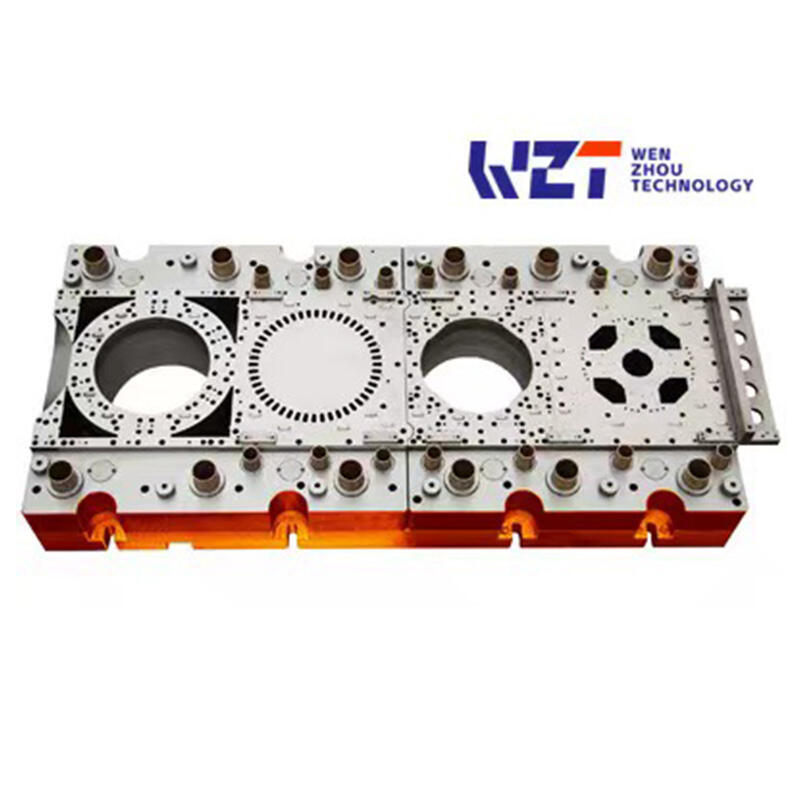Varieties of Stamping Mould Templates
Therefore, using different materials for stamping mould templates is essential to ensure precision and repeatability in production. In the upcoming segment, we would be discussing full details related to templates build like materials that are used in building these types of and why could they offer more advantages.
The Metallic Alloys - Made up from the bodies of strength
One of the largest application areas for metal alloys is stamping mould templates, which have high requirements on mechanical properties. Among these, stainless-steel is one-of-a-kind with its little much better sturdiness as well as rust resistance. In addition, bronze and titanium are the materials that the models are prepared from nickel or chrome.
Advantages:
METAL ALLOYS ARE HIGH TEMPERATUREA RESISTENT AND STRONG.
At the same time, they are tough but workable.
Safety Precautions:
More strength, and the very nature of metal alloys being sharp means you should be carefull with them.
Optimal Usage:
Metal Alloys : They are optimally shaped for the accurate and tough parts to be fashioned.
The Swiss Army Knife of Resins
Plastic resins- Plastic resins, are hard but flexible synthetic material that have the desired strength for use in stamping mold templates. Most commonly used would be polyurethane or polycarbonate versions.
Advantages:
Scale much less as they are lighter weight and harm resistant, than plastic resins.
As they are very flexible, customization of these in to different forms is easily done.
Safety Considerations:
These are difficult or impossible to safety handle when they have sharp edges but also because of the energetic polymer fume emanating from them.
Ideal Applications:
These produce stiff, yet bendable items.
Rubber: The Evergreen Elastic
RUBBER Rubber is a natural substance and this reason, it has been used widely for the elasticity since long they are durable due to their origin. It is used in making of a broad range stuffs such as automotive parts and medical instruments.
Advantages:
Inherent elasticity is the property of rubber to stretch and recoil without snapping back.
This in conjunction with it being easy to clean as well.
Safety Guidelines:
There is no danger when using rubber, it does not have sharp edges and safety in operation.
Best Utilization:
Where flexibility was necessary for the rubber and more rigidity championed. it is also more shock absorbent.
The Magnum Opus of Ceramic
The question is that the ceramics are very good in strength and heat tolerant, so that it makes them perfect material for engine parts, machine space of industrial enterprise by those who use ceramic.
Advantages:
Ceramics In fact, ceramics are wear-resistant and have high strength.
They are structurally strong even under very high temperatures.
Safety Measures:
These materials are handled by ceramists naturally and without sharp edges.
Optimum Usage:
Ceramics are excellent for products requiring high-strength and durability properties.
COMPOSITE A True Story of STRENGTH + LIGHTWeight
Using a wodge on, the buildup of these more commingled materials fabricates portion innate from remedying stiffness and weak value. These are widely used in numerous applications such as automotive and aerospace industries.
Advantages:
The special thing with these materials is that they are more durable and lighter.
We simply mean adaptable to the extents we expect customization, and they have been known to carry some of their features around.
Safety Protocols:
Composite materials do not have sharp edges and therefore they can be easily handled.
Recommended Applications:
Industries that need components with the ideal mix of strength, resilience and lightness have been turning to composite materials.
In Conclusion
Stamping mould template is a precision,complex and stable change rule in the history of an industry tool. The selection of individual materials including metal alloys, plastic resins and rubber, ceramics and also composite substances definately eliminates a large fraction in ensuring function is straightforward responsible for the producers to always ensure that there was end-user expense required from your manufacturing industry.

 EN
EN








































